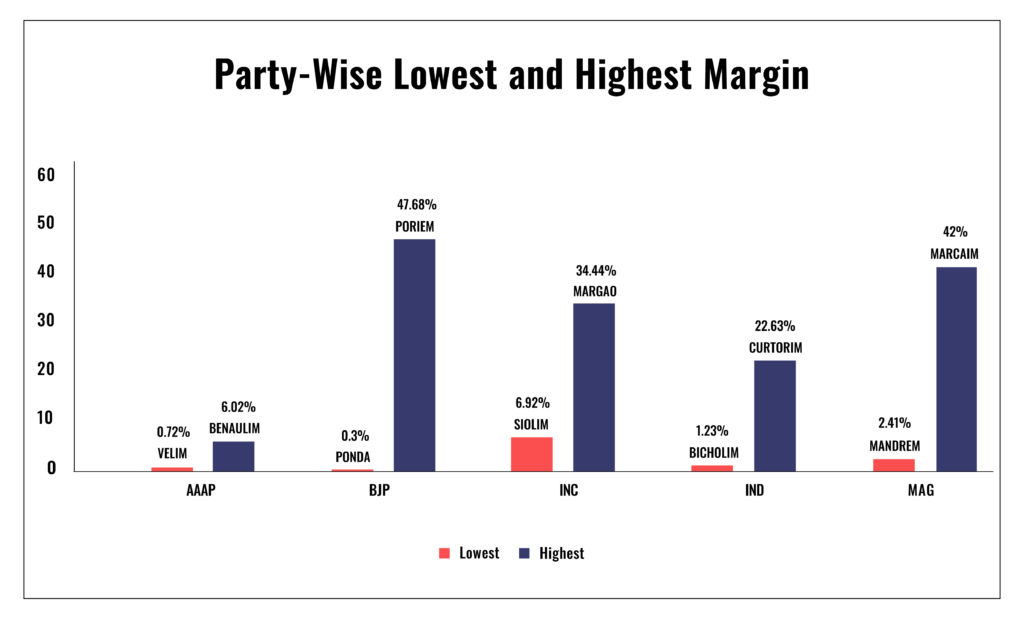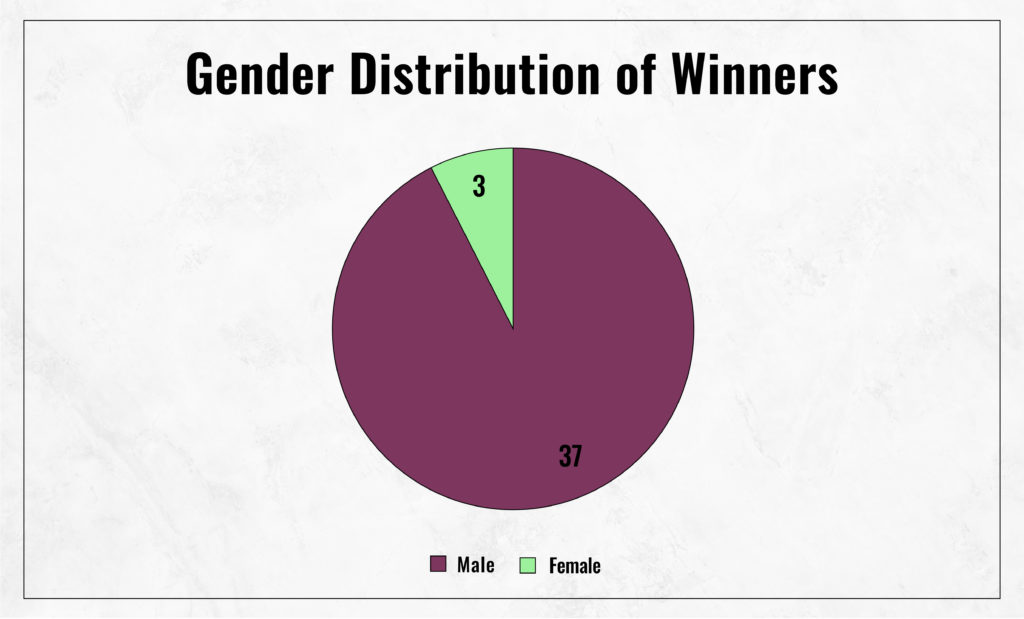The Goan Legislative Assembly elections were conducted on 14 February 2022 to democratically elect 40 members of the Eighth Goa Legislative Assembly.
The results were announced on 10th March 2020. Certain basic facts were made clear with the outcome. BJP reached the half-mark and became the undisputed leader with 20 MLAs, INC was able to gather 11 MLAs and AAP managed to gain 2 MLAs. Regional parties garnered support too- MGP got 2 seats, RGP and GFP got one each, while 3 independent MLA’s gained voter’s trust too. New entrant AITC failed to earn any MLAs even though they scored 5.2% of the overall voter share which translates to an impressive 49,480 votes.
This clarity is in contrast to the 2017 results and their messy aftermath. Back then the INC won 17 seats, while the BJP had won only 13. Interestingly BJP’s voter share was superior to INCs- 32.5% compared to the latter’s 28.4%. Post-results an embarrassing game of poaching and counter-poaching enabled BJP to outmaneuver INC and claim the government. In 2017, AAP was not in the picture in terms of seats, but they gained a 6.3% vote share, which in 2022 marginally increased to 6.7%- a massive contrast to the Punjab scenario, where they made record-breaking gains.
Regional parties display a state of decline compared to 2017- GFP lost its 3.5% 2017 vote share and came down to 1.84%, while MGP vote share of 11.3% depleted to 7.6%. Homegrown RGP had no presence in 2017, now earned its 1st seat.
Margins

Victory margins provide a more meaningful insight behind claims of victory and defeat. Ravi Naik, the BJP candidate in Ponda, won by 77 votes and Vikesh Mukesh Borka from the Revolutionary Goans Party defeated the sitting BJP MLA in St-Andre with 76 votes- these are wafer-thin margins. On the other hand, BJP’s Deviya Rane from Poriem won with a massive margin of 47.68%, and MGP’s Sudhin Dhavalikar from Marcaim won with a margin of 42%.
2022 saw an increase in the number of candidates in the fray. 2017 saw 251 candidates, while due to the increased presence of newer parties, the number jumped up to 301. Out of the 301 candidates, 276 were male and 25 were female candidates. For a State known for its high literacy rates, these are low numbers in terms of representation. Currently, the 8th Goan Legislative Assembly has 37 male MLAs and 3 female MLAs- just about 7.5%.
Lota Candidates
Goa’s 2017 debacle spoiled the legislative assembly’s credibility as a straight-shooting democratic institution. An ADR report highlighted the shameful fact that as many as 24 legislators in Goa- 60 % of the 40-member state Assembly, have switched parties in the last five years. The report further stated, that with this, Goa has set a unique record, which is “unparalleled” in the history of Indian democracy.
BJP is currently home to the largest number of defectors aka Lota candidates. Out of 16 defectors, 10 won the recent election. The 10 winners were previously from INC which lost 5 MLAs, MGP- 2 MLAs, UGP’s 1 MLA and 3 formerly independent candidates. The remaining 6 secured 1st runner up positions.
INC shares the honour with 16 defectors, out of which 5 won. The winners constitute 3 MLAs from BJP, 1 from NCP and 1 formerly independent candidate. 2 candidates were placed in the 1st and 2nd runner up positions alike, 1 candidate gained the 3rd runner up position and the remaining 4 secured the 4th runner up position.
9 Lota candidates moved to AAP with hopes of winning and none did. 2 were able to secure the 1st runner up position, 2 got the 2nd runner up position, 1 Lota candidate received the 3rd runner up position and 4 were stuck at the 4th runner up position.









